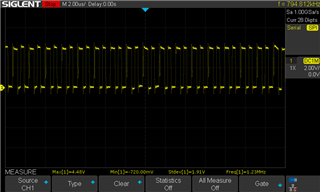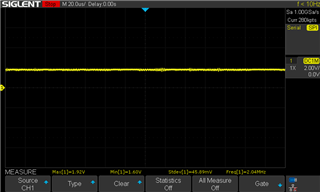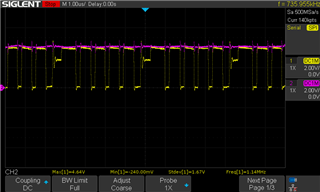Tool/software:
Hello,
I recently completed assembly of a design using TPS92201ADRVR. While my LEDs light up just fine, they seem to be at 100% brightness all the time and PWM dimming does not work. I'm unsure of what could cause this, but if someone could provide some input on what I'm doing wrong it would be very helpful.
There are two images from my oscilloscope attached. One is the PWM signal from an ESP32, running at 20% duty cycle and 25kHz frequency. The peak voltage is 3.5V, so it meets the high-level voltage threshold for TPS92201ADRVR, and I already checked that the signal meets the minimum PWM on time requirement specified by the datasheet. The second is Vfb, it has a minimum of 80mV, mean of 233mV, and maximum of 640mV.


Additionally, varying the duty cycle of the PWM signal has no affect on the amount of current the device draws. My schematic is attached. I am using Rsense=125mOhms based on needing 800mA current at Vfb=100mV.


Thanks and I appreciate any insight you might be able to offer.





